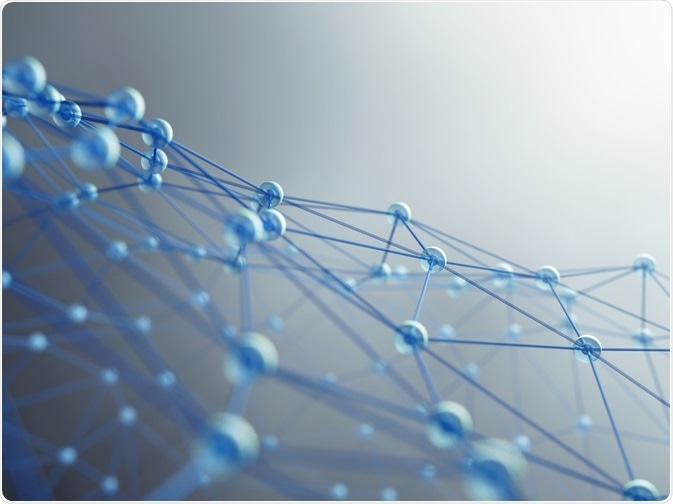Nanogels consist of a single or multiple types of nanoparticles that are surrounded by a cross-linked hydrophilic polymer network. The primary application of nanogels in medicine is as a payload carrier or as a delivery vehicle for drugs, diagnostic agents, or other small molecules or biomolecules.
 Photobank Gallery | Shutterstock
Photobank Gallery | Shutterstock
How to load a nanogel
Over 30% of the mass of nanogels can be made up of the payload, consisting of small molecule drugs or labels, or biomolecules such as proteins. They are held in place through electrostatic, van der Waals, hydrophobic interactions or covalent bonding with either the nanoparticles or polymer network. Additionally, targeting ligands may be incorporated into the surface of the nanogel, allowing for active targeting delivery to a specific organ, tissue, or cell type.
What are the Applications of Nanogels?
Drug carriers
Nanogels that use pH sensitivity to release insulin in a regulated manner have been used to treat diabetes. When bound to glucose, aminophenylbornic acid (PBA) functionalized nanogels shift their ionization equilibrium, thus increasing the anionic charge density of the gel, which results in swelling. Insulin is released once the gel is swollen, and the gel shrinks once glucose levels return to normal.
Nanogels that are able to release antibiotics on demand have also been produced. These triple layered nanogels contain a hydrophobic lipase-sensitive layer between a crosslinked polyphosphoester core and a polyethylene glycol shell. The antibiotics are protected inside the polyphosphoester core, and only released in the presence of lipase or lipase secreting bacteria.
Sensing glucose
Glucose sensing nanogels have also been developed, consisting of silver nanoparticles surrounded by PBA. In this case, swelling of the gel alters its refractive index, affecting the fluorescent properties of silver nanoparticles, which can be monitored in order to determine blood glucose highly accurately, with a resolution of 0.1mM, in a fraction of a second.
Imaging and diagnostics
Iron oxide and gold nanoparticles make excellent contrast or fluorescent agents for applications such as x-ray imaging, computed tomography (CT) and magnetic resonance imaging (MRI) scanning, among many others.
Clustering of these particles by incorporation into a gel intensifies the sensitivity and stability of such particles. Small molecule probes and contrast agents can also be incorporated into the gel matrix, improving their retention time and localized concentration over free molecules alone.
The ability to integrate several imaging agents and techniques into a single platform allows for precise information to be gathered. For example, optical imaging agents may be combined with iron oxide nanoparticles, which are magnetic and thus are excellent MRI contrast agents. This combination allows for clear receptor-mediated highlighting of areas within the body, combined with the high-resolution imagery provided by MRI.
What limitations prevent clinical application of nanogels?
As little as 5-10% of an injected dose of nanogel has been shown to reach the target site, with the vast majority excreted through the kidneys and liver. However, the rate of excretion is highly dependent on the size, shape and surface chemistry of the nanogel and its constituent nanoparticles, and methods to improve retention time at the target site are in development.
The identification of suitable overexpressed target ligands on the exterior of cancer cells is an additional limitation on the potential optimal use of nanogels, as such ligands are similarly expressed on the surface of healthy cells throughout the body.
Further Reading
Last Updated: Jan 4, 2019